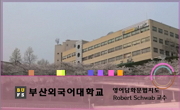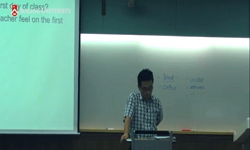This paper examines the Han discourse of Kim Chi-ha, focusing on his religious view of the world in particular, based on the articles, interviews and court statements related to the Han discourse of Kim Chi-ha. The Han discourse spoken in the literary...
http://chineseinput.net/에서 pinyin(병음)방식으로 중국어를 변환할 수 있습니다.
변환된 중국어를 복사하여 사용하시면 됩니다.
- 中文 을 입력하시려면 zhongwen을 입력하시고 space를누르시면됩니다.
- 北京 을 입력하시려면 beijing을 입력하시고 space를 누르시면 됩니다.
김지하의 ‘한’ 담론 : 60년대의 ‘한’ 담론과의 비교를 중심으로 = Kim Chi-Ha’s Han Discourse : Focusing on comparison with the Han discourse of the 1960s
한글로보기https://www.riss.kr/link?id=A106964559
- 저자
- 발행기관
- 학술지명
- 권호사항
-
발행연도
2019
-
작성언어
-
- 주제어
-
자료형태
학술저널
-
수록면
93-119(27쪽)
- 제공처
-
0
상세조회 -
0
다운로드
부가정보
다국어 초록 (Multilingual Abstract)
This paper examines the Han discourse of Kim Chi-ha, focusing on his religious view of the world in particular, based on the articles, interviews and court statements related to the Han discourse of Kim Chi-ha.
The Han discourse spoken in the literary circle in the 1960s was born from the necessity in “search of Korean ethnic identity” by pure literature school.It captured the colonial image of Korean art as “the beauty of sorrow,” and extracted “the like of han” from the work of the colonial poet Kim So-wol.
On the other hand, Kim Chi-ha transformed the “Han”, which was roughly conceptualized in the literary world in the 1960s, into a struggle for democratization, and seized Han as the energy of social change against the military dictatorship and driving force of resistance. It worked to instill a new concept in Han, and to inject Han’s image that added its own definition to their own work.
In the 1960s, the literary world regarded subjects who hold Han as the “people of the Korean Peninsula who share the history of hardship, ” including the invasion of foreign forces and the victims of feudal society, but Kim Chi-ha brought up a new subject (victim) called “the people who are oppressed by the military dictatorship at this very moment” From the intangible perpetrator of “history”, the tangible perpetrator of “dictatorship” was born. As “victim” and “perpetrator” of Han were brought out, the inward Han which had only been piled up quietly, came to possess outward forces of anger and resistance.
Kim Chi-ha also pointed out the “negative aspect” of “violence” driven by the “han” brought about by the “violence” of power around 1980s, and argues that the thought of “Dan” should break the chain of violence. He also believed that in a democratic world, the Han of value that was not appropriate for the new world would disappear. it shows that Kim Chi-ha actively tried to adopt religious values such as Donghaku and Christianity, and restrained himself from the revolution with violence.
Kim Chi-ha’s Han discourse was increasingly moved away from the “ethnic sentiment” and in solidarity with democratization movements and activists in the “world”, it moved toward assimilation with the ideas of religious movements seeking social change.
동일학술지(권/호) 다른 논문
-
- 한국종교학연구회
- 박병훈 ( Byounghoon Park )
- 2019
-
- 한국종교학연구회
- 최종성 ( Choi Jong Seong )
- 2019
-
- 한국종교학연구회
- 김도현 ( Kim Do-hyeon )
- 2019
-
니체와 엘리아데의 영원회귀사상 비교 : 시간관과 운명관을 중심으로
- 한국종교학연구회
- 오지혜 ( Oh Jihye )
- 2019





 KISS
KISS






